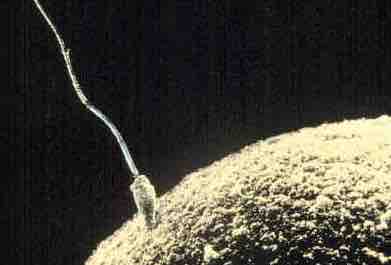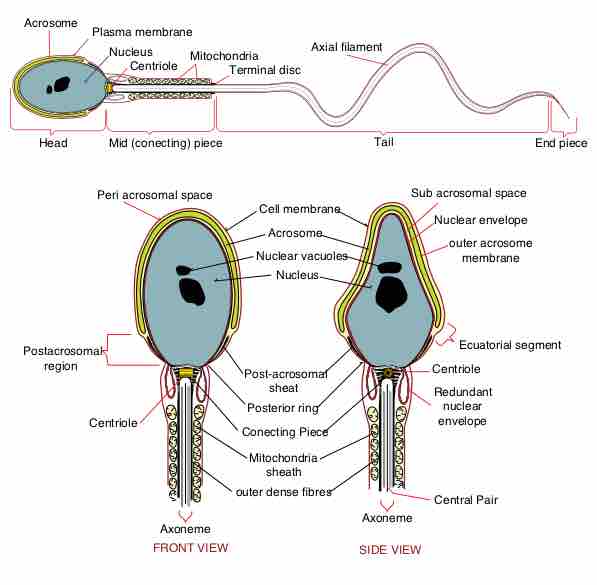The term sperm is derived from the Greek word for seed and refers to the male reproductive cells. In the types of sexual reproduction known as anisogamy and oogamy, there are marked differences in the size of the gametes, with the smaller termed the "male" or sperm cells. Sperm cells cannot divide and have a limited lifespan. After fusion with egg cells during fertilization, a new organism forms, beginning as a totipotent zygote. The human sperm cell is haploid so that its 23 chromosomes can join the 23 chromosomes of the female egg to form a diploid cell. During fertilization, the sperm provides the following three essential parts to the oocyte:
- A signalling or activating factor that causes the metabolically dormant oocyte to activate
- The haploid paternal genome
- The centrosome, which is responsible for maintaining the microtubule system
Sperm Anatomy
Sperm develop in the testes and consist of a head, a midpiece, and a tail. The head contains the nucleus with densely coiled chromatin fibers, surrounded anteriorly by an acrosome that contains enzymes for penetrating the female egg. The midpiece has a central filamentous core with many mitochondria spiraled around it.
Sperm Physiology and Function
In animals, most of the energy (ATP) for sperm motility is derived from the metabolism of fructose carried in the seminal fluid. This takes place in the mitochondria located in the sperm's midpiece. This energy is used for the journey through the female cervix, uterus, and uterine tubes.
Motile sperm cells typically move via flagella and require a water medium in order to swim toward the egg for fertilization.These cells cannot swim backwards due to the nature of their propulsion. The uniflagellated sperm cells (with one flagellum) of animals are referred to as spermatozoa.

Closeup of Mammalian Fertilization
Micrograph of a sperm poised to enter an ovum

Human Sperm
Detailed and labeled diagram of a human spermatozoa
Fertility Factors
Sperm quantity and quality are the main parameters in semen quality, a measure of the ability of semen to accomplish fertilization. The genetic quality of sperm, as well as its volume and motility, all typically decrease with age.